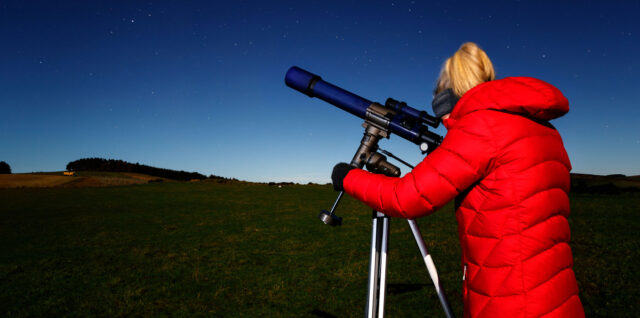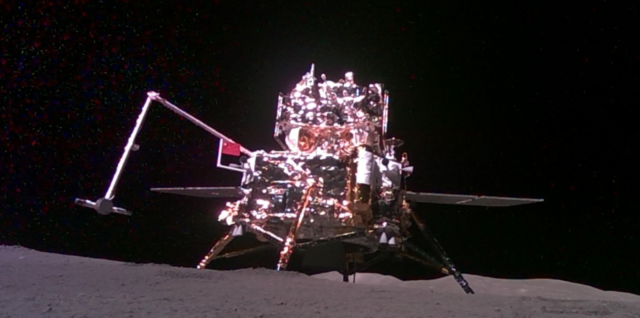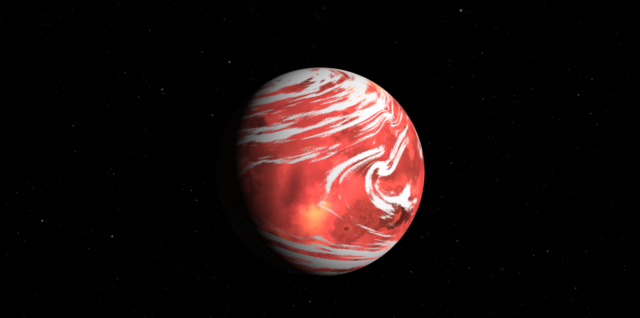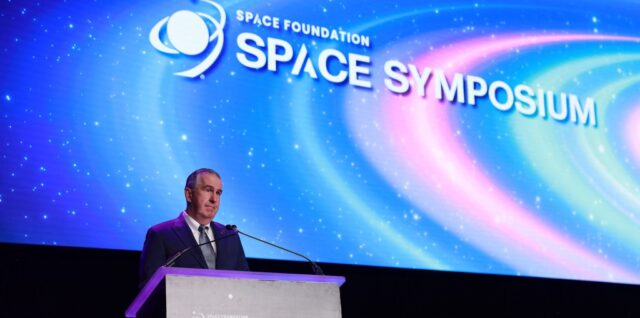Author Archives: Astrobitica
SpaceNews’ full Wednesday show daily from Space Symposium — now live

Here’s your SpaceNews show daily for Wednesday. Inside: a one-on-one with NASA acting administrator Janet Petro, a sharp commentary on accelerating space acquisition, and in-depth coverage of U.S. Space Command’s […] The post SpaceNews’ full Wednesday show daily from Space Symposium — now live appeared first on SpaceNews.
The search for biosignatures in Enceladus’ plumes

What kind of mission would be best suited to sample the plumes of Saturn’s ocean world, Enceladus, to determine if this intriguing world has the ingredients to harbor life? This is what a recent study presented at the 56th Lunar and Planetary Science Conference (LPSC 2025) hopes to address as a team of researchers investigated the pros and cons of an orbiter or flyby mission to sample Enceladus’ plumes.
An all-sky infrared camera named Dalek continues the search for alien technosignatures

In 2021, the Office of the Director of National Intelligence (ODNI) released a report detailing recently-declassified information on unidentified aerial phenomena (UAP). Since then, the Department of Defense has released annual reports on UAP through the All-domain Anomaly Resolution Office (AARO). Nevertheless, there is still a lack of publicly available scientific data. To address this, a new study led by the Harvard-Smithsonian Center for Astrophysics (CfA) and the Galileo Project proposes an All-Sky Infrared Camera (Dalek) to search for potential indications of extraterrestrial spacecraft.
Scientists map part of a mouse’s brain that’s so complex it looks like a galaxy
Astronomy professor offers new theory on universe’s star formation
Scientists discover how stellar-mass black holes emit powerful plasma jets

Black holes are fundamental to the structure of galaxies and critical in our understanding of gravity, space, and time. A stellar mass black hole is a type of black hole that forms from the gravitational collapse of a massive star at the end of its life cycle. These black holes typically have masses ranging from about 3 to 20 times the mass of our sun.
Isaacman says NASA should pursue human moon and Mars programs simultaneously
Best small telescopes 2025: Portable, lightweight models to travel with

These are the best small telescopes you can buy in every category. Continue ReadingBest small telescopes 2025: Portable, lightweight models to travel with
Conservationists raise alarm over Air Force plan to land SpaceX Starships on bird sanctuary atoll

“Installing rocket landing pads on Johnston Atoll cannot occur without significantly disrupting wildlife…” Continue ReadingConservationists raise alarm over Air Force plan to land SpaceX Starships on bird sanctuary atoll
Three new planets found around Barnard’s Star

As of 2025, astronomers have identified at least 14 stars within 10 light-years of the Sun. After the Alpha Centauri system, the next closest is Barnard’s Star, a solo red dwarf roughly 6 light-years away. And thanks to new observations, we now know that Barnard’s Star is orbited by four small, rocky exoplanets. But it’sContinue reading “Three new planets found around Barnard’s Star” The post Three new planets found around Barnard’s Star appeared first on Continue ReadingThree new planets found around Barnard’s Star
Scientists source solar emissions with largest-ever concentration of rare helium isotope

The NASA/ESA Solar Orbiter recently recorded the highest-ever concentration of a rare helium isotope (3He) emitted from the sun. A Southwest Research Institute-led team of scientists sought the source of this unusual occurrence to better understand the mechanisms that drive solar energetic particles (SEPs) that permeate our solar system. SEPs are high-energy, accelerated particles including protons, electrons and heavy ions associated with solar events like flares and coronal mass ejections.
Defense experts warn procurement bottlenecks risk U.S. space edge
Billionaire spacewalker highlights Mars trip for astronauts in his bid to become NASA’s next chief
Space Force to roll out strategy for international collaboration
That’s no space station, it’s a student-led drone show: Space photo of the day

The Space Foundation’s 40th Space Symposium got underway with space history lighting up the night sky over Colorado Springs. Continue ReadingThat’s no space station, it’s a student-led drone show: Space photo of the day
Surge in NATO spending to benefit space sector
China’s Chang’e 6 lunar samples suggest our moon is debris from an ancient giant Earth impact

Analysis of samples brought back from the farside of the Moon by the Chang’e 6 mission have found the water content of the lunar farside mantle is much more depleted compared to the nearside. Continue ReadingChina’s Chang’e 6 lunar samples suggest our moon is debris from an ancient giant Earth impact
Nearby exoplanet could offer clues about atmospheres around hot, rocky alien worlds

A nearby Earth-sized planet beyond our solar system could soon add to the diversity of known terrestrial worlds with their own “air.” Continue ReadingNearby exoplanet could offer clues about atmospheres around hot, rocky alien worlds
Capture the Lyrid meteor shower with our best camera for astrophotography, now $600 cheaper

The Nikon Z8 was rated as our best overall camera for astrophotography, and is $600 off on Amazon, perfect for capturing the Lyrid meteor shower! Continue ReadingCapture the Lyrid meteor shower with our best camera for astrophotography, now $600 cheaper




